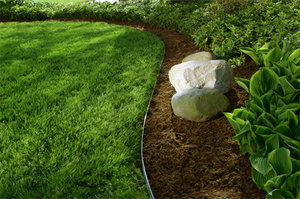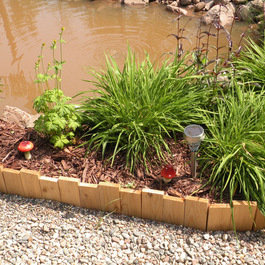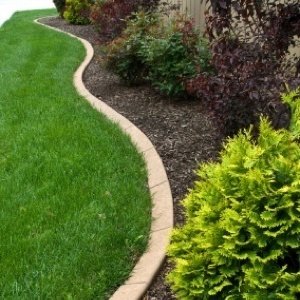Landscape edging / borders
An attractive edging can make the difference between an ordinary landscaping project and an outstanding one. Edging may be used to define one particular area or to separate adjoining spaces, such as a lawn from a flowerbed. Some edging, like flexible plastic, is nearly invisible, while other types are bolder, such as brick or cobblestone.
When selecting edging, consider whether to place it flush with the ground or raised. Around lawns, flish edging allows you to mow over it rather than trim around it. But raised edging better highlights the area it surrounds, which is often the objective.
• Brick is one of the most traditional and versatile edgings and can be laid in sand or mortar. Bricks can be installed flat or on edge, end to end, or side by side.
• Wood, treated or natrually decay resistant, goes with many landscape styles and can be made to curve.
• Plastic/composite wood boards have become popular and are highly resistant to rot and flexible enough to bend around curved.
• Timbers, whether pressure-treated or decay-resistant redwood or cedar, are effective and easy to install.
• Plastic and metal edging and can curved and staked to provide an easy-to-install rigid border for walkways.
• Stone is a virtually indestructible edging. Choose from cobblestone, field rubble, river rock, flat limestone, or pieces of warmly colored flagstone set on edge.
• Precast concrete is an inexpensive edging made in short sections; it's availabe curved, straight, and with scalloped tops. Not as distinctive in appearance as other options.
Natural Landscape and Irrigation is located in Lake Oswego, Oregon and specializes in installation of landscaping edging and borders in the Greater Portland Metropolitan Area including Beaverton, Tigard, Tualatin, West Linn and surrounding areas. Please feel free to contact us for more details.



